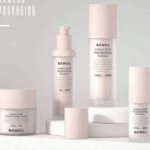Plastic cosmetic bottles are the most widely used type of packaging material in the industry, and their material selection directly affects product stability, safety, and user experience. The following is a detailed introduction to mainstream plastic materials:
One, Comparison of Characteristics of Six Core Plastic Materials
PET: Transparency, very transparent with 5 stars; Temperature resistance: 70 ℃, environmentally friendly, recyclable; Cost: Mid end; Application product: toner/essence bottle;
PP: Transparency, usually transparent with 2 stars; Temperature resistance: 135 ℃, environmentally friendly, recyclable; Cost: Low end; Application products: Cream bottles/shower gel bottles
HDPE: Transparent, 1 star opaque; Temperature resistance: 100 ℃, environmentally friendly, recyclable; Cost: Low end; Application product: Shampoo bottle/ointment tube
PMMA: Transparency, very transparent with 5 stars; Temperature resistance: 80 ℃, environmentally friendly, difficult to recycle; Cost: High end; Application product: high-end face cream bottle
PETG: Transparency, 4 stars are more transparent; Temperature resistance: 70 ℃, environmentally friendly, recyclable; Cost: mid to high end; Application product: alcohol spray bottle
AS: Transparency, 2 stars are generally transparent; Temperature resistance: 85 ℃, environmentally friendly, recyclable; Cost: Mid end; Application product: lotion press bottle
Second, Deep analysis of material properties
- PET (Polyethylene terephthalate)
Advantages:
Extremely high transparency (transmittance>90%), comparable to the display effect of glass
Strong impact resistance, not easily shattered (drop test pass rate>95%)
Defects:
Poor oil resistance, long-term exposure to essential oils/makeup remover oils may cause swelling and deformation
Acetaldehyde is prone to precipitation at high temperatures (accelerated precipitation above 65 ℃)
Modification plan:
Adding nano silica to enhance barrier properties (reducing oxygen permeability by 40%)
Co injection molding technology: inner layer PP+outer layer PET, solves the problem of oil penetration
- PP (polypropylene)
Chemical King:
Resistant to strong acids/alkalis/alcohols (commonly used materials for laboratory bottle washing)
Steam sterilization tolerance (121 ℃/20min)
Process limitations:
High crystallinity leads to low transparency (transparency agent needs to be added to increase to 85%)
Significant low-temperature brittleness (sudden drop in impact strength below -5 ℃)
Innovative applications:
Magnetic white PP bottle: adding titanium white powder, presenting a matt porcelain texture (lady face cream bottle)
- PMMA (acrylic)
High end synonym:
Transmittance of 92%+, refractive index of 1.49 (jewelry grade optical effect)
High surface hardness (Mohs hardness level 3-4), scratch resistance
Fatal Defect:
Poor chemical resistance: cracks instantly when exposed to solvents such as acetone and chloroform
Must be used with a PE inner liner (increasing cost by 30%)
Industry Truth:
The so-called ‘acrylic bottle’ is actually a double-layer structure of PMMA shell+PE inner liner
- PETG (copolyester)
Alcohol Buster:
Excellent ethanol resistance (still stable at a concentration of 95%)
Transmittance of 88%+, haze<1% (high clarity)
Processing points:
Accurate control of injection molding temperature (210-250 ℃), otherwise it is prone to yellowing
Special ink screen printing is required (ordinary UV ink has poor adhesion)
Third, Key dimensions of material selection decision-making
- Content compatibility testing
- Content: Alcohol content>30%, recommended material: PETG/PP, taboo material PET/AS, testing standard: soaking at 40 ℃ * 90 days to observe the dissolved substances
- Content: High fat paste, recommended material: PP/HDPE, taboo material PET, testing standard: Accelerated migration test (fat weight gain method)
- Content: Acidic product (pH<5), Recommended material: PP/PETG, Prohibited material: PMMA, Testing standard: Tensile strength test after soaking in acidic solution
- Cost and mass production considerations
Mold cost (taking 50ml bottle as an example):
PP/PET injection mold: ¥ 8000-15000 (life cycle 500000 times)
PMMA two-color mold: ¥ 60000+(including inner liner structure)
Minimum order quantity:
Public mold PET bottles: 3000 pieces
Customized acrylic bottles: 10000 pieces+
- Key points of environmental compliance
New EU regulations:
The PPWR directive requires that the proportion of PET bottle recycled materials be ≥ 30% by 2030
Prohibit plastic bottle caps containing D4/D5/D6 silicone oil (migration risk)
Chinese standards:
GB/T 16288-2023 requires mandatory labeling of plastic recycling labels (such as PET → ♳)



